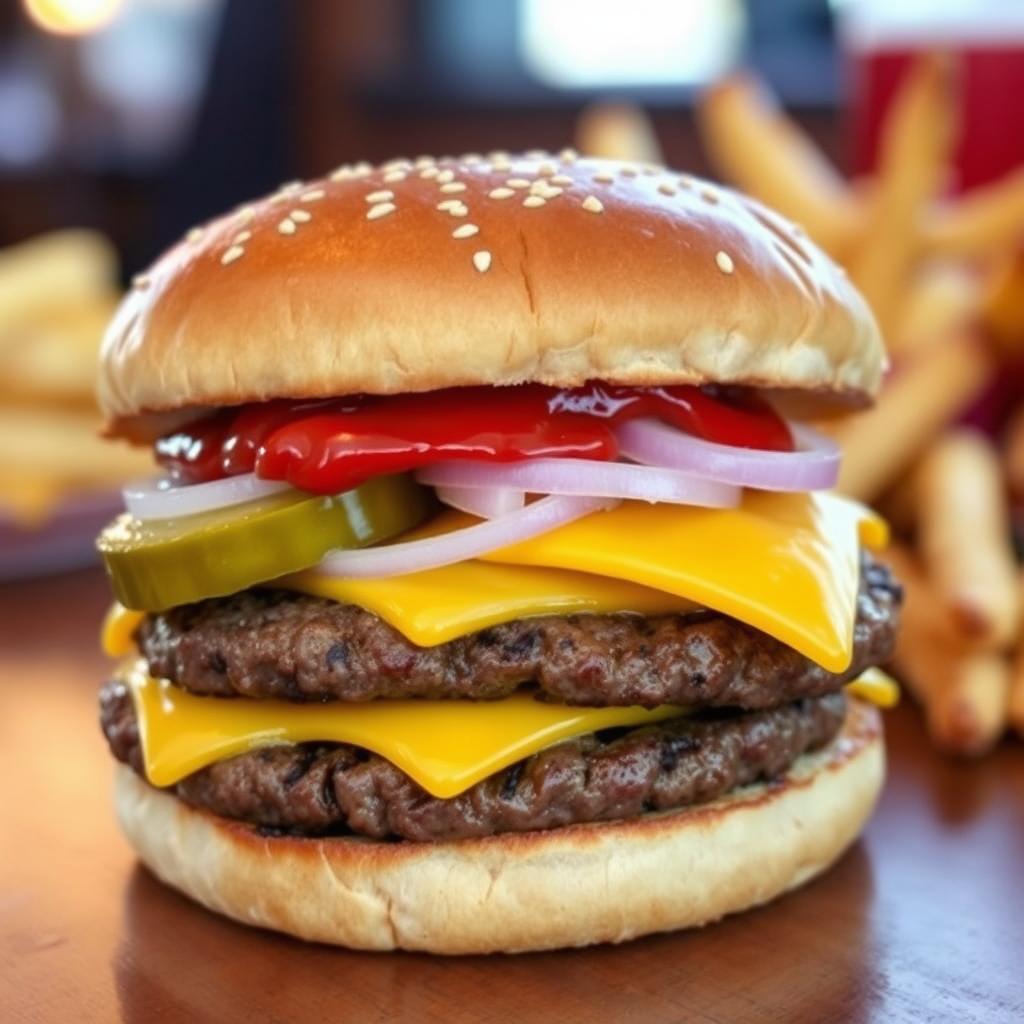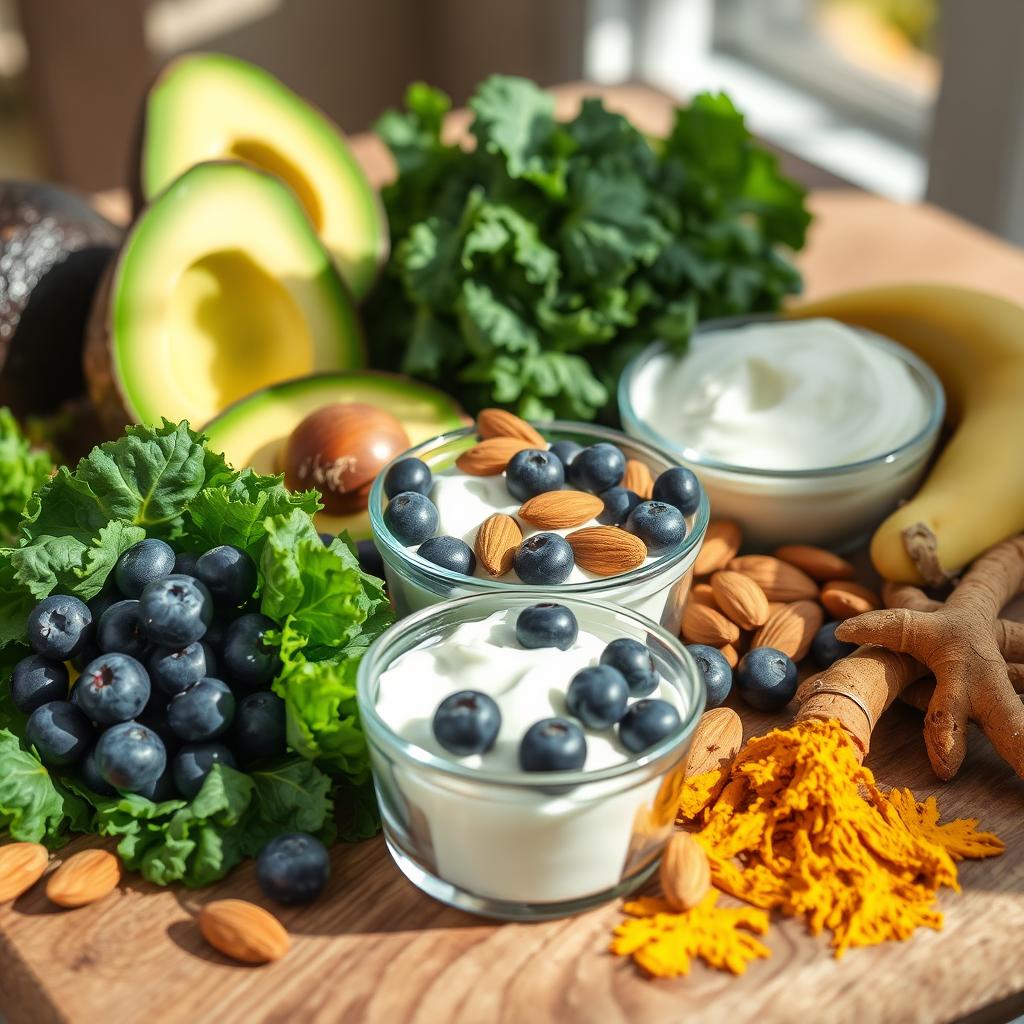Craving something hearty and indulgent? The Double Quarter Pounder with Cheese is one of McDonald’s most iconic menu items. But have you ever stopped to wonder what its calorie count and nutritional value really look like, especially if you’re trying to make smart eating choices? Whether you’re managing your daily calorie intake, chasing high protein options, or simply curious about how it fits into your diet, this burger tends to spark a lot of questions.
Here’s a quick snapshot:
- Calories: 740
- Protein: 48g
- Total Fat: 42g
- Carbohydrates: 43g
Why does this matter? For one, fast food often toes the line between irresistible taste and hefty calorie counts. The Double Quarter Pounder with Cheese, for instance, packs a punch not just in flavor but also in calorie density. But here’s the good news: with a little awareness, it’s possible to incorporate items like these into a balanced diet without guilt. Ready to dive deeper? Let’s break down the details to help you make smarter choices.
What Is a Double Quarter Pounder with Cheese?
The Double Quarter Pounder with Cheese is one of McDonald’s most iconic and indulgent menu items, offering a hearty upgrade to the classic Quarter Pounder. Designed for big appetites, this burger features two juicy quarter pound beef patties seasoned with a pinch of salt and pepper, delivering a rich, savory bite. Each patty is cooked to perfection, serving as the foundation of a burger that’s topped with melted slices of American cheese, tangy pickles, minced onions, and a generous squeeze of ketchup and mustard, all nestled within a toasted sesame seed bun.

So, what sets it apart from the regular Quarter Pounder with Cheese? The keyword here is “double.” With twice the beef and cheese, the Double Quarter Pounder clocks in at around 740 calories roughly 250 calories more than the single patty Quarter Pounder with Cheese. The addition of a second patty means extra protein and fats, but also a significant boost in calories, making the Double Quarter Pounder a heavily calorie dense item. If you’re managing your calorie intake or looking for a lighter option, this is an important factor to consider.
| Item | Calories | Protein (g) | Total Fat (g) | Carbs (g) |
|---|---|---|---|---|
| Double Quarter Pounder with Cheese | 740 | 48 | 42 | 43 |
| Quarter Pounder with Cheese | 520 | 30 | 27 | 41 |
If you’re after bold flavors and a filling fast food experience, the Double Quarter Pounder with Cheese is an undeniable standout. However, for a more balanced choice, the regular Quarter Pounder with Cheese might be your go to. It’s all about finding what fits best into your personal dietary goals without giving up the joy of your favorite cheeseburger.
Double Quarter Pounder with Cheese: Calorie Count
Have you ever wondered exactly how many calories are packed into McDonald’s Double Quarter Pounder with Cheese? Brace yourself this indulgent menu item comes with a hefty 740 calories per serving. This number represents a significant portion of the recommended daily calorie intake for many people, especially if you’re aiming for a 2,000 calorie diet. But how does it stack up against other burgers on the McDonald’s menu? Let’s dive into the numbers.
| Burger | Total Calories | Calories from Fat | Calories from Protein | Calories from Carbs |
|---|---|---|---|---|
| Double Quarter Pounder with Cheese | 740 | 360 | 180 | 200 |
| Quarter Pounder with Cheese | 520 | 250 | 150 | 120 |
| Cheeseburger | 300 | 120 | 80 | 100 |
From the table, it’s clear the Double Quarter Pounder with Cheese has the highest calorie count among the bunch, thanks in part to its sizable portions of beef and cheese. Around 49% of its calories come from fat, followed by 24% from protein and 27% from carbohydrates. By comparison, a standard Quarter Pounder with Cheese contains 520 calories, and a regular Cheeseburger a much lighter 300 calories.
If you’re aiming to incorporate high protein foods into your diet, this burger does deliver a noteworthy 42 grams of protein. However, keep in mind the calorie trade off those additional layers of beef and cheese will quickly push you toward (and beyond) your daily limits if your overall diet isn’t carefully balanced.
So, can you still enjoy a Double Quarter Pounder with Cheese without derailing your goals? Absolutely. Pair it with lighter sides, like a side salad or apple slices, and consider cutting back on calorie dense meals later in the day. Remember, smart eating is about balance!
Full Nutrition Facts Table for the Double Quarter Pounder with Cheese
Ever wondered exactly what’s packed into a McDonald’s Double Quarter Pounder with Cheese? Aside from its bold flavor, this burger delivers some serious calorie and macronutrient power. Let’s break it down so you can make a smarter eating choice. Whether you’re tracking calories for weight management or monitoring sodium intake for overall health, this handy table lays it all out for you.

| Nutrient | Amount Per Serving | % Daily Value* |
|---|---|---|
| Serving Size | 1 burger (226g) | – |
| Calories | 740 | 37% |
| Total Fat | 42g | 54% |
| – Saturated Fat | 20g | 100% |
| – Trans Fat | 1.5g | – |
| Cholesterol | 160mg | 53% |
| Sodium | 1,360mg | 59% |
The Double Quarter Pounder with Cheese clocks in at 740 calories, making it one of McDonald’s highest calorie menu items. But the kicker? The saturated fat alone accounts for a whopping 100% of the recommended daily intake based on a 2,000 calorie diet. Additionally, the sodium content stands at 1,360mg that’s almost 60% of your daily limit.
Does this mean you need to steer clear? Not necessarily. If you’re craving this indulgent burger, consider balancing it out with lighter sides, like a side salad or fruit slices, and drink plenty of water to help offset the sodium. It can even fit into high protein diets, given its impressive protein content (not shown here but worth noting!) as long as you stay mindful of your overall nutrient goals for the day.
Are you tracking these details when enjoying fast food? Let us know in the comments how you balance convenience and nutrition in your diet!
Nutritional Insights: Making Smarter Choices with a Double Quarter Pounder
Let’s dive deep into the nutritional profile of the Double Quarter Pounder with Cheese, a McDonald’s heavyweight in terms of both portion size and calorie content. With approximately 740 calories per serving, this burger packs a punch but what makes it so calorie dense? The answer lies in its high calorie ingredients and nutrient breakdown.
High Calorie Ingredients Explained
The centerpiece of this burger is its two beef patties, which alone contribute a significant chunk of the calorie count. Each patty offers a dense protein rich bite, but with notable amounts of saturated fat as well. Add in two slices of American cheese, piled on for creaminess, and the calorie total inches higher. Finally, don’t overlook the sauces while they enhance flavor, they often contain added sugars and oils that quietly boost caloric intake.
Portion Control and Nutrient Density
If you’re not ready to part ways with this indulgent classic, one strategy is focusing on portion control while balancing the meal with lighter options. For example:
- Pair it with a side salad instead of fries to rein in calorie overload.
- Opt for water or an unsweetened iced tea to avoid sugary drink pitfalls.
- Consider skipping the cheese or sauce for small nutritional wins.
These adjustments can help you enjoy the Double Quarter Pounder without tipping over your daily calorie budget.
What to Watch For: Sodium and Saturated Fats
It’s not just calories we need to watch there’s a more hidden challenge with fast food: sodium and saturated fats. The Double Quarter Pounder contains over 1,300 milligrams of sodium, inching close to half the daily recommended limit for most adults. While its high protein content makes it tempting for gym goers, excessive saturated fats and sodium levels can overshadow those benefits.
Smart eating isn’t about eliminating indulgences entirely enjoying moments of comfort food, like a burger or a chocolate chip cookie, can be part of a balanced lifestyle. The key is understanding what’s on your plate and making choices that work for you.
How the Double Quarter Pounder with Cheese Fits into Your Diet
Ever wondered how a McDonald’s Double Quarter Pounder with Cheese stacks up against your daily nutritional needs? Let’s break it down. With approximately 740 calories, this burger takes up a significant chunk of the recommended daily intake for an average adult following a 2,000 calorie diet. But when enjoyed smartly, it can fit into your diet without derailing your goals. Here’s the breakdown:

| Nutritional Component | Amount Per Serving | % Daily Value (DV)* |
|---|---|---|
| Calories | 740 | 37% |
| Total Fat | 42g | 54% |
| Saturated Fat | 19g | 95% |
| Cholesterol | 130mg | 43% |
| Sodium | 1,360mg | 59% |
| Protein | 48g | 96% |
Percent Daily Values (DV) are based on a 2,000 calorie diet. These values may vary depending on individual calorie needs.
While the high protein content makes it an attractive option for someone aiming to fuel up post workout or boost their protein intake, the saturated fat and sodium levels are worth noting. For many, the Double Quarter Pounder with Cheese is best enjoyed as an occasional treat rather than a regular staple.
How to Balance the Meal
If you’re craving one, don’t worry you can make it work! Try these tips:
- Pair it with lighter options: Swap out fries for a side salad or fresh fruit to keep the calories in check.
- Choose water or unsweetened tea: Skip sugary sodas to cut extra calories and sugar.
- Adjust your remaining meals: Go for lower calorie, nutrient dense meals later in the day to balance things out.
- Split the burger: Share one with a friend and enjoy half the calories while still satisfying your craving.
Moderation is key when fitting calorie dense items like the Double Quarter Pounder with Cheese into your diet. Make informed choices, and you’ll enjoy the best of both worlds: flavor and balance.
Healthier Alternatives and Modifications
- Remove one patty from the Double Quarter Pounder to cut down on calories and fat.
- Opt out of cheese to further reduce calorie content.
- Pair with healthier sides like apple slices, a premium salad, or a fruit cup.
- Choose water, unsweetened tea, or low calorie drink options instead of soda.
- Explore the value menu for smaller portions of sandwiches or wraps.
Fast food doesn’t have to derail your balanced eating plan it’s all about moderation and thoughtful choices. And hey, life isn’t all kale salads and quinoa bowls, so balance it out now and then, perhaps with a sweet treat you make at home, like this sweet potato pie recipe for a family friendly, delicious dessert. By making small adjustments, you can enjoy flavorful fast food without sacrificing your diet or nutritional goals.
When it comes to making balanced food choices, understanding the nutritional breakdown of what you eat is crucial. For instance, if you’re a fan of McDonald’s iconic quarter pounder with cheese, you might be surprised to learn it packs around 740 calories and 48g of protein in a single serving. While it’s undeniably high in both flavor and calorie content, it’s also a protein heavy option that could fit into a high protein diet or post workout meal if consumed mindfully.
So, how can you make smarter eating decisions without sacrificing the foods you love? Here are a few tips:
- Pair high calorie items with lighter options like a side salad or fruit.
- Consider portion control eating half now and saving the rest for later.
- Balance your meal by tracking your intake using a nutrition calculator.
By keeping an eye on your overall diet and calorie budget, it’s entirely possible to savor fast food favorites while staying health conscious.





